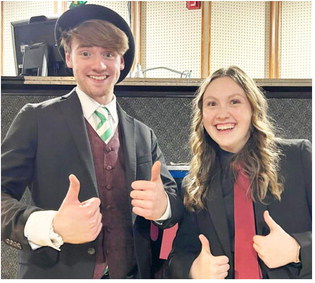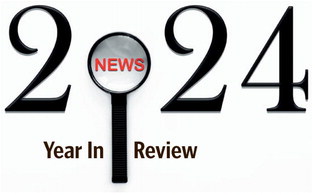Montana Looks To Become Latest State To Boost Nonprofit Hospital Oversight


Montana is poised to become the latest state to increase scrutiny of how its nonprofit hospitals deliver community benefits in exchange for their tax-exempt status.
Under proposed rules, the Montana Department of Public Health and Human Services plans to collect data on nonprofit hospitals’ charitable acts, such as discounting prices, providing health education, or conducting free screenings. Montana officials expect to adopt the new rules in August, but state officials have yet to set standards for exactly what constitutes acceptable giving or how much hospitals must do.
The proposal comes some four years after a state audit found shortcomings in the health department’s oversight. The rules largely mirror federal requirements that national health policy analysts said have yet to lead to any meaningful enforcement.
“What is being proposed in Montana doesn’t really move the needle,” said Kevin Barnett, a researcher with the California-based nonprofit Public Health Institute who has studied hospital community benefits for decades. “It kicks the can down the road to say ‘we’ll consider this another day.’” State officials would now be paying more attention, he said, but the impact depends on what they do with the information.
Montana’s plan is part of a national trend by states to try to cover federal enforcement gaps. The state would join at least 10 others that require nonprofit hospitals to create a broad community benefit plan and 25 states that mandate the facilities publicly share their financial assistance policies, according to The Hilltop Institute, a think tank at the University of Maryland-Baltimore County.
Policymakers have focused on nonprofit hospitals as a growing number of people in the U.S. struggle to afford medical care and, altogether, owe at least $220 billion in medical debt. The debt disproportionately affects people in poverty and Black people, according to data analyzed by KFF, a health information nonprofit that includes KFF Health News.
States with set giving standards take different approaches. In recent years, California adopted new reporting requirements for hospitals to show how they serve vulnerable populations. Oregon created new rules for when and how hospitals must provide patients discounted care. And five states — Illinois, Nevada, Pennsylvania, Texas, and Utah — have set minimums that hospitals must spend toward community benefits.
Just over half of the hospitals in the U.S. are nonprofits. While each must report the “community benefits” they provide, federal law doesn’t specify which services qualify or how much to give. Inconsistent hospital reports make it difficult to distinguish between low and high givers.
Montana’s 2020 state audit found that hospitals report benefits vaguely and inconsistently. The following year, a KFF Health News investigation found that, even by hospitals’ own reports, some of Montana’s richest facilities fell behind the national average in community benefit spending.
A Montana law passed in 2023 requires the state health department to track hospitals’ giving and to define standards. The department’s proposed rules spell out some requirements, such as calling on hospitals to post financial assistance policies prominently online. But mostly, the list of requirements sets the stage for more to come.
Holly Matkin, a health department spokesperson, said the agency will establish standards that are “fair to all nonprofit hospitals.” The state plans to collect data over a three-year period to begin establishing standards in 2026.
The state’s proposed rules have some differences from federal requirements, such as mandating hospital-level reports as opposed to systemwide information that covers numerous hospital locations. They also leave room for the state to seek more details about how hospitals provide care at reduced prices, such as the number of people who receive financial aid or the average amount given per person.
But the Montana Hospital Association lobbied legislators against including too many reporting rules, arguing it would increase hospitals’ administrative burden. State lawmakers then narrowed the data the state can collect to largely the information hospitals already provide to the federal government. The association supports the state’s rules as proposed but has said any state standards need flexibility.
“The truth is that most communities have more health needs than they can effectively address,” said Bob Olsen, president and CEO of the Montana Hospital Association. “Models that apply a one-size-fits-all standard on communities take decision- making out of local communities, and have the potential to do more harm than good.”
Adam Zarrin, director of state government affairs with the Leukemia & Lymphoma Society, supported Montana’s proposal during a June 18 public hearing. But he testified that Montana could do more, such as mandating screening for financial assistance and requiring that hospitals provide it to patients at particular income levels.
“These rules could go even further to provide greater access and protections for Montanans who need and apply for financial assistance,” Zarrin said.
Health department officials said they plan to create numerical or narrative standards for judging how hospitals say they’ve responded to people’s needs — or a combination of the two. Officials are still vague on what either standard could entail. But they have said the benchmarks would be set each year based on each hospital’s size and patient revenue. Hospitals with operating losses wouldn’t have to meet the forthcoming rules.
Ge Bai, a health policy professor at Johns Hopkins University who has long studied hospitals’ community benefits, said such standards come with trade-offs. For example, standards that can be met through words rather than numbers might allow large hospitals to pay consultants to window-dress the story of their benefits while smaller systems struggle to show their worth. She said numerical rules, such as spending minimums, could cause some hospitals to slow efforts once they meet the state’s requirement.
“It’s not perfect,” Bai said. “But If we don’t do anything, well, that’s the status quo.”
In 2020, Oregon set minimums for the free or discounted care hospitals must provide, but even with those rules, the state’s overall charity care spending didn’t increase, Bai said. Last summer, lawmakers there added a new set of rules, including that hospitals must screen patients with large hospital bills to see if they qualify for financial assistance.
California also has implemented a combination of standards. In recent years, the state expanded reporting requirements, mandating that nonprofit hospitals explain the math behind their community benefits tally and detail how they’re serving vulnerable populations such as people who are homeless. The state also mandated that hospitals offer discounted care to uninsured patients or some people with costly medical bills.
Even in states like California, it can be hard to see how those policies affect patients who struggle to access care, said Barnett of the Public Health Institute. He said he’d like to see states require hospitals to reduce health disparities with specific outcomes, such as lowering preventable emergency room visits by people from especially poor neighborhoods.
In 2025, California will start requiring hospitals to submit annual reports that include an analysis of access to care and a plan to address disparities. The state is still defining those reporting rules.
Whatever standard states employ, health policy researchers said promoting transparency is key, such as by standardizing reporting rules to provide a clear picture across systems. Bai said Montana’s rules are a good first step.
Matkin, from the state health department, said whatever giving benchmarks Montana sets won’t be a copy- and-paste of what others have tried. The department plans to create standards unique to Montana.



